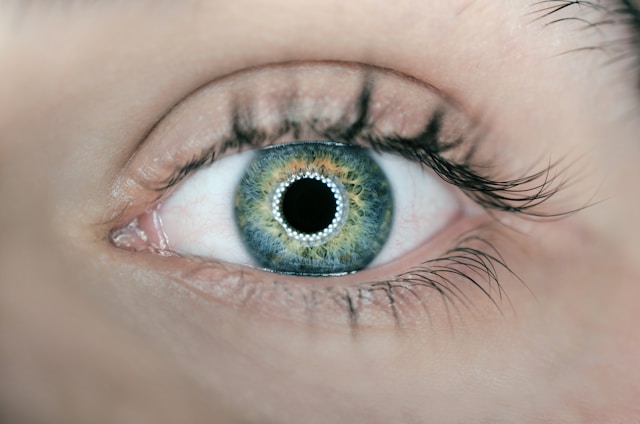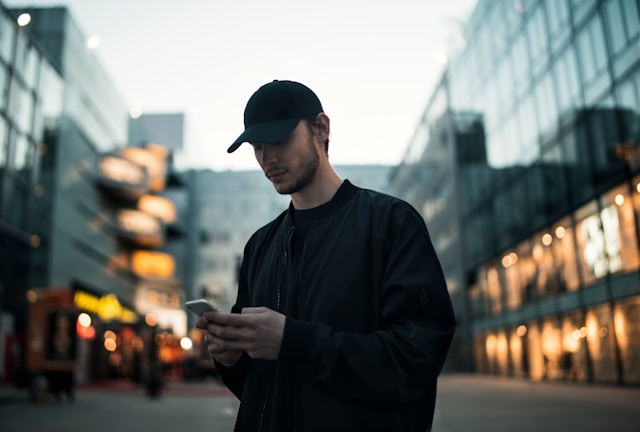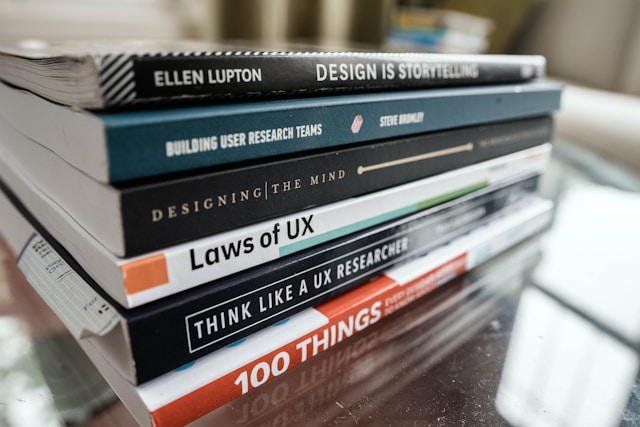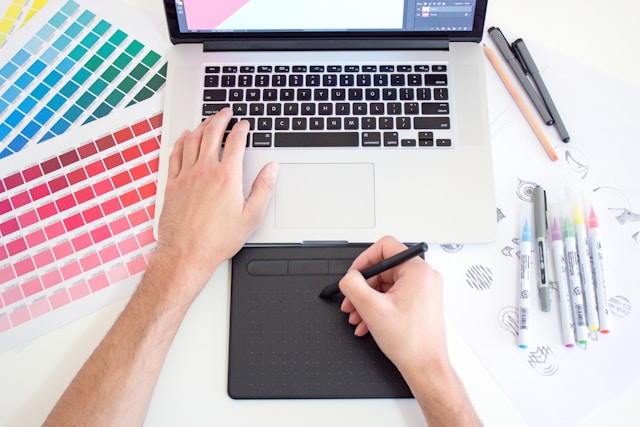UX has come a long way from its origins, and so have its research methods. For instance, eye tracking is now relatively common among UX design teams looking to improve their designs. It lets you put yourself in your users’ shoes and see what they see.
In this guide, we delve into how you can use this method to improve your UX.

What Is Eye Tracking?
Firstly, what is eye tracking? This is a revolutionary research technique that tracks the eye movement of participants to see where they look. It also tracks how long the gaze lingers in specific areas.
It works by fitting the participant with eye-tracking technology. Researchers then observe the process to find out how users scan digital products, where they’re looking, and so on. It provides real-time, accurate information about user perceptions.
Marketers also track eyes in research, but it’s particularly revolutionary in the UX field.
How Eye Tracking Fits Into UX
Eye tracking UX research is not necessarily a new thing, but it is now more accessible. Greater access to this field is amazing because it means researchers can dive deep into what their users want.
In usability testing, there is sometimes the risk of researcher interference or bias. Eye tracking gets around this because the researcher doesn’t even need to be in the room. As a result, you won’t interfere with the user’s natural behavior.
What’s more, following the user’s eyes can uncover problems more clearly. In an interview, the user may not truly know the problem. Even in quantitative data collection, the researcher might make the wrong assumption about where the user encountered friction. However, when you can see through the user’s eyes, you can recognize the problem sooner.

How Eye Tracking Works
But how does it work? You need to understand this in order to incorporate it into your research.
First, the researcher provides the participant with an eye tracker. This is usually in the form of glasses or a webcam integrated with software.
The researcher then selects areas of the stimulus to display. This is called the Area of Interest (AOI). It might be a function, an advertisement, or another area of the screen. Knowing the AOI determines what metrics you need to collect.
The other two concepts you need are:
- Fixation: When the participant’s gaze focuses on one object.
- Saccade: The movement of the eyes between the fixations.
In most instances, you record the eye movement of the participants and obtain a heat map. Let’s say you’re testing the positioning of the main CTA. It might take a long time for the user to fixate on the AOI. Then, you know that you may need to move it.
However, it’s always important to analyze your results in context. Never rely on this technique alone; you should also combine it with other research methods. For example, you can test the click rate at the same time. Or, use a Thinking Aloud test to gather the user’s thoughts.

How To Do Eye Tracking for UX
So, how do you actually perform an eye-tracking research study? The Nielsen-Norman Group outlines a full process for setting up your research study. We have simplified it here to explain the process.
Every research study begins with a question. First, you need to pin down what it is that you want to find out. Formulate a well-thought-out research question that lets you probe your design. Crucially, your research question should make it easier to analyze your results. You can formulate it in the form of a hypothesis. For example, “Placing the CTA button in the top right corner will drive more conversions.”
At this point, you can start to recruit participants. You need to recruit people from your target market, ensuring that you’re testing with the right people. Furthermore, you need a pool of people large enough to produce a valid data set. Of course, you might have budget constraints, so you can’t recruit endless participants. A good rule of thumb is to recruit at least 30 participants for a heatmap study.
You can conduct eye-tracking studies in person (in a lab) or remotely. The next part of the process is to decide which one is more appropriate. Note that lab studies are more resource-intensive and, therefore, more expensive.
Remote studies, meanwhile, allow you to test with users from around the world. Plus, it’s less labor and resource-intensive.
Please note that, for both methods, you’ll need to decide what kind of software to use. Each software has different features and price points, so explore your options thoroughly.

Eye Tracking for Mobile UX
Back in the day, you needed high-tech eye trackers to perform this method. The regular smartphone camera was no use, so researchers had to resort to assistive technology.
Nowadays, things are very different. On average, mobile visits account for 313% more traffic than desktop sites. As a result, UX designers are focusing heavily on mobile. Designing for mobile is different in several ways, not least the size of the screen. It also differs in functionality, context of use, and more.
When designing mobile UX, it’s best to use the same device for tracking the user’s eyes. As a result, you get an accurate representation of how users are viewing the device. In fact, many eye trackers are not as precise when it comes to small screens. Thankfully, mobile software now exists to allow researchers to perform eye-tracking tasks with mobile devices.
Not only is this convenient and more accurate, but it’s also cheaper. Software solutions (compared to assistive technologies) are up to 100x more affordable. As a result, more and more teams have access to this high level of research.
Plus, you can get accurate results with impressive speed.
So, what are the best software options?
Eye Tracking Software: Top 4 Options
Eye-tracking software is becoming ever more popular, which means there are plenty of options on the market. Each one has different features, with some offering more robust suites and others covering the basics. They also differ in price. It’s important to do your research to find a method that suits your team.
Check out our top picks for eye-tracking solutions below.
1. Lumen
Lumen is a firm that uses behavioral research techniques to understand why people pay attention to adverts and marketing. Their software uses a mobile camera or webcam to produce accurate eye-tracking results.
Lumen also combines eye-tracking tech with facial coding and implicit response time techniques. As a result, you have more data to work with. This ‘in context’ testing can provide you with valuable results to help you hone your UX.
Although Lumen specializes in marketing and ad optimization, you can also use it for UX and product design. Lumen works with client insight teams and research agencies in deep collaborative partnerships, too. So you always have access to the best information.
2. Element Human
Element Human is a platform focused on understanding your customers. It offers a huge range of tools, including surveys. The goal of their research is to understand human emotion, perception, and behavioral intentions. By utilizing their full suite of features, you can truly understand your audience and target market.
Again, Element Human’s eye-tracking software makes use of everyday devices. It captures eye movement, but with facial recognition, it also aims to understand the user’s emotions.
3. Tobii
Tobii Pro provides eye-tracking solutions to help you understand human behavior. Again, it’s applicable for a wide variety of purposes, but researchers can use it for UX.
This company provides hardware for tracking eye movement, including wearable technology like glasses. Participants can use these in-home, making remote research easier and more cost-effective. Alternatively, Tobii also offers screen-based eye trackers. These differ from software but offer a similar experience. Meanwhile, Tobii Pro Lab software is also available.
Above all else, Tobii provides a range of service options, from self-service to turnkey project delivery.
4. EyeSee Research
EyeSee Research is another company focused on behavioral research. This includes tracking eye movement, facial coding, and measuring reaction times.
Their research is webcam-based, allowing you to conduct research remotely. They even work in 40 different countries. EyeSee conducts the research for you and then supplies a detailed report that includes insights, data, and recommendations.
As a result, you get a comprehensive overview of the study’s results.

Need UX Inspiration? Try Page Flows
Eye tracking is an exciting prospect for many UX researchers. Indeed, it can provide exceptional insights into how your users behave and what you need to change about your product.
Research is just part of the journey, though. You still need to innovate, design, and create. When you need design inspiration, why not get it from proven products? Page Flows is a helpful resource for finding UX design ideas. Get started today to access our growing library of user flow recordings and finally stay up-to-date with current design trends.





